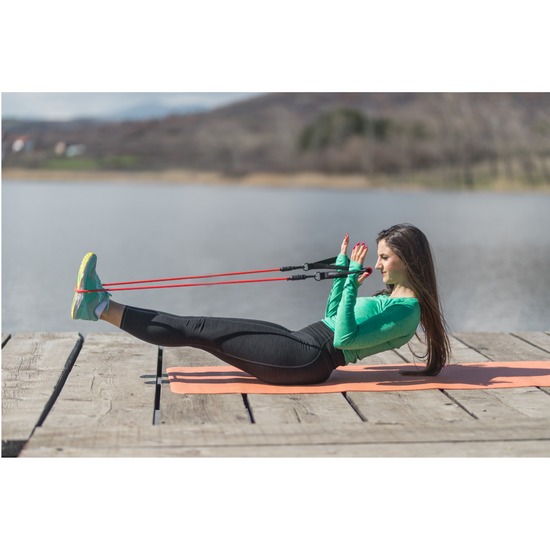With winter upon us, where should we go to work out? Even the most dedicated workout enthusiasts can feel discouraged when it's cold, dark and wet outside.
But just because the temperatures are dropping doesn't mean that outdoor training has to go into hibernation. In fact, there are numerous benefits to continuing your workout outside during the colder months. For example, it helps fight the winter blues, boosts energy and gets you outdoors for some vitamin D, which supports a variety of systems and functions in the body to keep us healthy.
However, it is also important to know that summer and winter training are not the same and that you should take a few extra safety precautions before heading out into the ice and snow.
With these 4 tips, nothing will stand in the way of your PAKAMA outdoor training, even in snow.
1. dress warmly
Dress appropriately. Exercising outdoors in winter requires a little more preparation than simply putting on shorts and a T-shirt as you would in summer or spring. Most importantly, you should dress in layers to maintain warmth, regulate body temperature and prevent moisture on the skin to keep you dry while you work up a sweat.
As a first layer, a close-fitting, thin synthetic material such as polyester, polypropylene or silk. These materials wick sweat away from the body, unlike cotton, which stays damp against the skin and draws heat from the body. On top of this, a layer of fleece or wool is best, which promotes insulation and keeps you warm. The outer layer should then be made of wind- and water-repellent material to protect against any winter weather.
2. be visible
Don't forget your safety gear. Not only does the sun set earlier, but winter weather brings dark clouds, rain, sleet and snow showers, which can make it difficult for vehicles and others to see you. It is important to wear bright colours or better still reflective clothing when you are exercising outside and especially after work or dinner when it is dark. You can also opt for a headlamp to be seen better.
Protect your head, hands, feet and ears. Protecting your extremities from winter temperatures is crucial. Since blood circulation is strongest in the core of the body, the head, ears, hands and feet are more susceptible to frostbite and the body more vulnerable to hypothermia.
So before you leave the house, don't forget your hat, an ear warmer, gloves or thermal mittens. It's also important to protect your skin, because yes, you can get sunburnt in winter - even on cloudy or overcast days. So wear sunscreen with SPF 30 or more on your face, lips and other parts of your body that might be exposed to the sun. Also remember that snow reflects UV rays. So if you are outside and there is snow, it is even more important.
3. weather check
Remember to check the weather forecast before you set off so you can be wary of strong winds, snow, freezing rain or anything else. If it's cold and you're exercising on pavement, you should also be especially aware of black ice.
4 Warm-up
Although you may want to start with a sprint to warm up your body faster, you should still start slowly, as with any other exercise, to get your body used to the active environment and reduce the risk of injury. You should remember to stretch as some people tend to have stiff joints due to the cold months.










2 comments